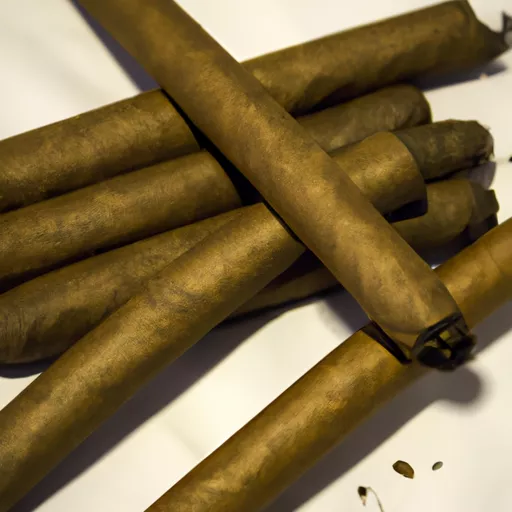
As a devoted cigar enthusiast, I have always held a certain appreciation for the artistry that goes into crafting the perfect cigar. However, in recent years, I have found myself gravitating towards little cigars. These miniature versions of the classic cigar have become increasingly popular among cigar smokers, and for good reason. In this article, I will delve into the world of little cigars, exploring their history, characteristics, and why they have become a favorite among cigar lovers.
First and foremost, let’s define what exactly a little cigar is. Unlike traditional cigars, little cigars are often made with a blend of tobacco that is more commonly used in cigarettes. They are typically smaller in size, ranging from 3-4 inches in length, and have a ring gauge of 20 or less. The ring gauge is a measurement of the cigar’s circumference, and a smaller ring gauge means a thinner cigar. Little cigars also have a filter, similar to cigarettes, whereas traditional cigars do not. These differences in size and composition give little cigars a milder flavor and a quicker smoking time compared to traditional cigars.
The history of little cigars dates back to the mid-19th century. In the 1850s, the cigar industry was booming, and cigars were a symbol of luxury and sophistication. However, as cigarettes became more popular and readily available, cigar manufacturers saw a decline in sales. In order to compete with the rising popularity of cigarettes, cigar makers began producing smaller, cheaper versions of their classic cigars. These little cigars were marketed towards a working-class audience, offering a more affordable option without sacrificing the quality and handcrafted nature of traditional cigars.
Despite their initial purpose as a lower-cost alternative to traditional cigars, little cigars quickly gained popularity among cigar smokers of all backgrounds. In the 20th century, companies like Swisher Sweets and Dutch Masters became household names with their line of little cigars. Today, little cigars come in a wide variety of brands, flavors, and sizes, appealing to a diverse range of smokers.
One of the defining characteristics of little cigars is their flavor profile. Due to their blend of tobacco, little cigars have a milder taste compared to traditional cigars. They are also available in a variety of flavors, such as vanilla, cherry, and chocolate, which adds a unique and enjoyable twist to the smoking experience. These flavors are achieved by infusing the tobacco with various natural and artificial flavorings. This allows smokers to choose a flavor that suits their palate and adds a bit of fun to their smoking ritual.
Another distinctive feature of little cigars is their convenience. Due to their smaller size, little cigars are perfect for on-the-go smokers or those who don’t have the time for a longer smoking session. They also come in handy during colder months when traditional cigars may not be as enjoyable outdoors. The filter of a little cigar also makes it easier and less messy to smoke, as you do not have to deal with disposing of the cigar’s ash.
Some cigar purists may argue that little cigars are not as “authentic” as traditional cigars, but I would beg to differ. While they may not have the same complexity and depth of flavor as traditional cigars, little cigars still require skill and precision to make. The rolling process is just as important, and the tobacco must be cured and aged properly to achieve a high-quality smoke. As a cigar lover, I can appreciate the craftsmanship that goes into creating a good little cigar, just as I do with traditional cigars.
Furthermore, little cigars are an excellent option for those who are new to the world of cigars. They offer a less daunting entry point into the hobby and can serve as a stepping stone to eventually trying traditional cigars. Their milder flavor and shorter smoke time make them a perfect starting point for beginners. They also come at a lower price point, making them an accessible option for those who may not want to invest in a more expensive traditional cigar just yet.
In conclusion, little cigars may not have the same prestige and allure as traditional cigars, but they have certainly carved out a place in the cigar world. With their unique flavors, convenience, and accessibility, they have become a favorite among cigar enthusiasts and new smokers alike. So the next time you’re looking to light up a cigar, don’t overlook the little cigar. Give it a try, and you may just be pleasantly surprised by its taste and experience.
